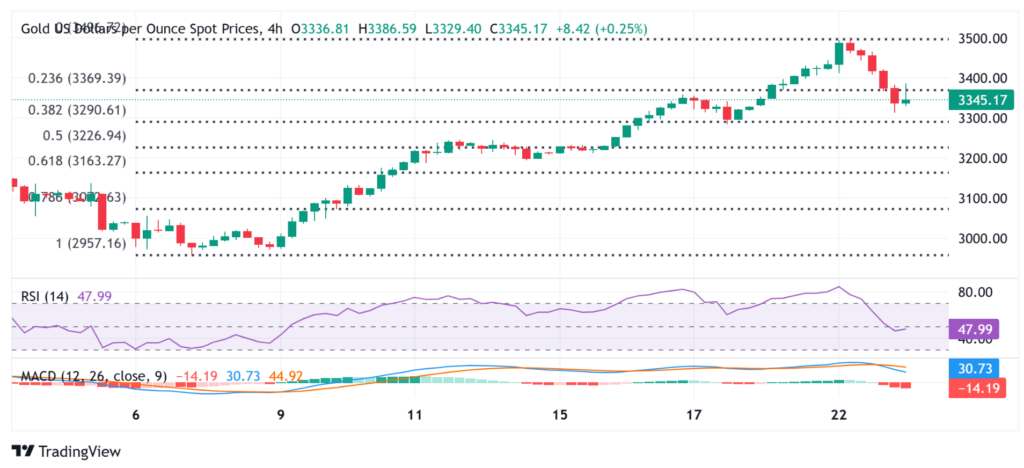
In a note released recently, JPMorgan has predicted that the price of gold could surpass $4,000 per ounce in the coming year.
This forecast is based on the bank’s assessment of heightened recession risks, which are being fueled by escalated US tariffs and the continuing trade conflict between the US and China, Reuters quoted the bank in a report.
The bank’s analysis suggests that these ongoing trade tensions and the potential for a global economic downturn are likely to increase the demand for safe-haven assets, such as gold.
Forecasts
As investors seek to protect their wealth from market volatility and economic uncertainty, the price of gold is expected to rise significantly, potentially reaching the $4,000 mark.
JPMorgan has revised its gold price forecast upwards, and now anticipates that gold will average $3,675 per ounce by the fourth quarter of 2025.
Furthermore, they project that prices will surpass $4,000 per ounce by the second quarter of 2026.
The bank also acknowledges the risk that prices could exceed these forecasts sooner than anticipated if demand is stronger than expected.
The bank said:
Underpinning our forecast for gold prices heading towards $4,000/oz next year is continued strong investor and central bank gold demand averaging around 710 tonnes a quarter on net this year.
Gold prices retreat from record levels
Spot gold prices experienced a significant surge, achieving a remarkable 29% increase throughout the year and setting 28 new record highs.
This upward trajectory culminated in a historic milestone on Tuesday, as the price of spot gold reached $3,500 per ounce for the first time ever.
This achievement underscores the growing demand for gold as a safe-haven asset amidst global economic uncertainties.
However, the bulls in the gold market were taking a bit of a breather on Wednesday as prices fell nearly 2% at the time of writing.
The most-active gold contract on COMEX was at $3,352.65 per ounce, down nearly 2% from the previous close.
US President Donald Trump retreated from his criticism of Federal Reserve Chair Jerome Powell, stating he does not plan to dismiss him before his term ends in May 2026.

Following this, US equity indices saw a significant increase on Tuesday, while gold prices fell.
“Adding to this, upbeat comments from Trump administration officials about US-China trade talks further boosted investors’ confidence and prompted some profit-taking around the safe-haven gold price following the recent record run,” Haresh Menghani, editor at FXstreet, said in a report.
Meanwhile, Goldman Sachs increased its end-of-2025 gold price forecast from $3,300 to $3,700 per ounce earlier this month.
The financial institution noted that in extreme scenarios, it is conceivable that gold could trade near $4,500 per ounce by the end of 2025.
Risks to upside
The biggest fundamental risk for a potential bearish case for gold would be an unexpected decrease in central bank demand, JPMorgan said.
“More materially bearish would be a scenario where US economic growth remains extremely resilient to tariffs allowing the Fed to turn much more proactive in fighting inflation risks, prompting markets to price in hikes even before worrying inflation actually arrives,” analysts at the bank noted.
Additionally, given the uncertainty surrounding industrial demand, JPMorgan anticipates that silver will face significant challenges in the near future.
However, they predict that a “catch-up window” will emerge in the latter half of 2025, driving prices up to $39 per ounce by the end of the year.
At the time of writing, the most-active silver contract on COMEX was at $32.650 per ounce, down 0.9% from the previous close.
“Often, silver can come from nowhere and play catch-up with its more popular partner,” said David Morrison, senior market analyst at Trade Nation.
But the fact that it is also a significant industrial metal may be a negative for many traders, as they assess the likelihood of a slowdown in global economic growth amid tariff uncertainty.
The post JPMorgan sees gold topping $4,000 by Q2 2026 on rising trade tensions appeared first on Invezz

